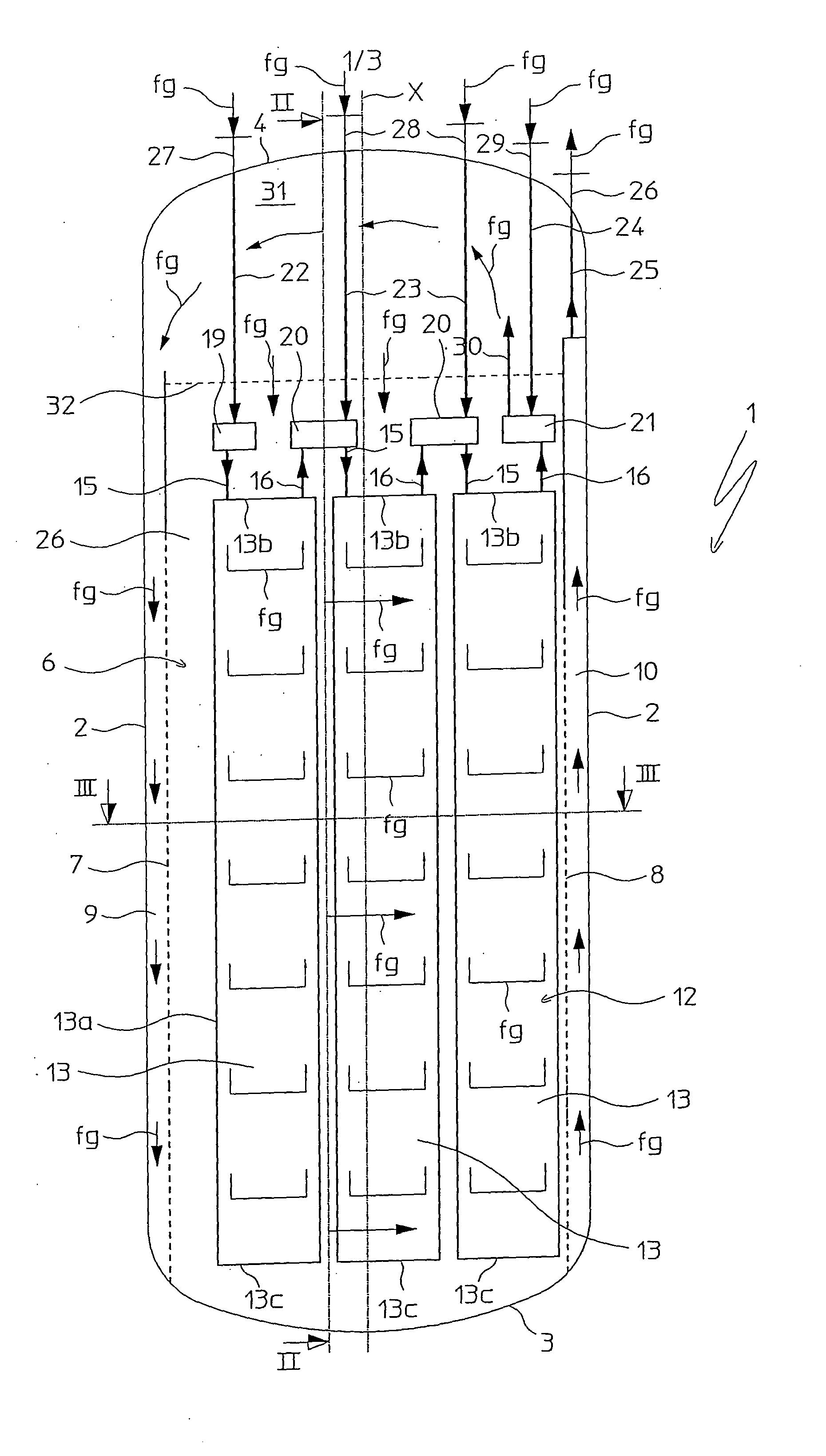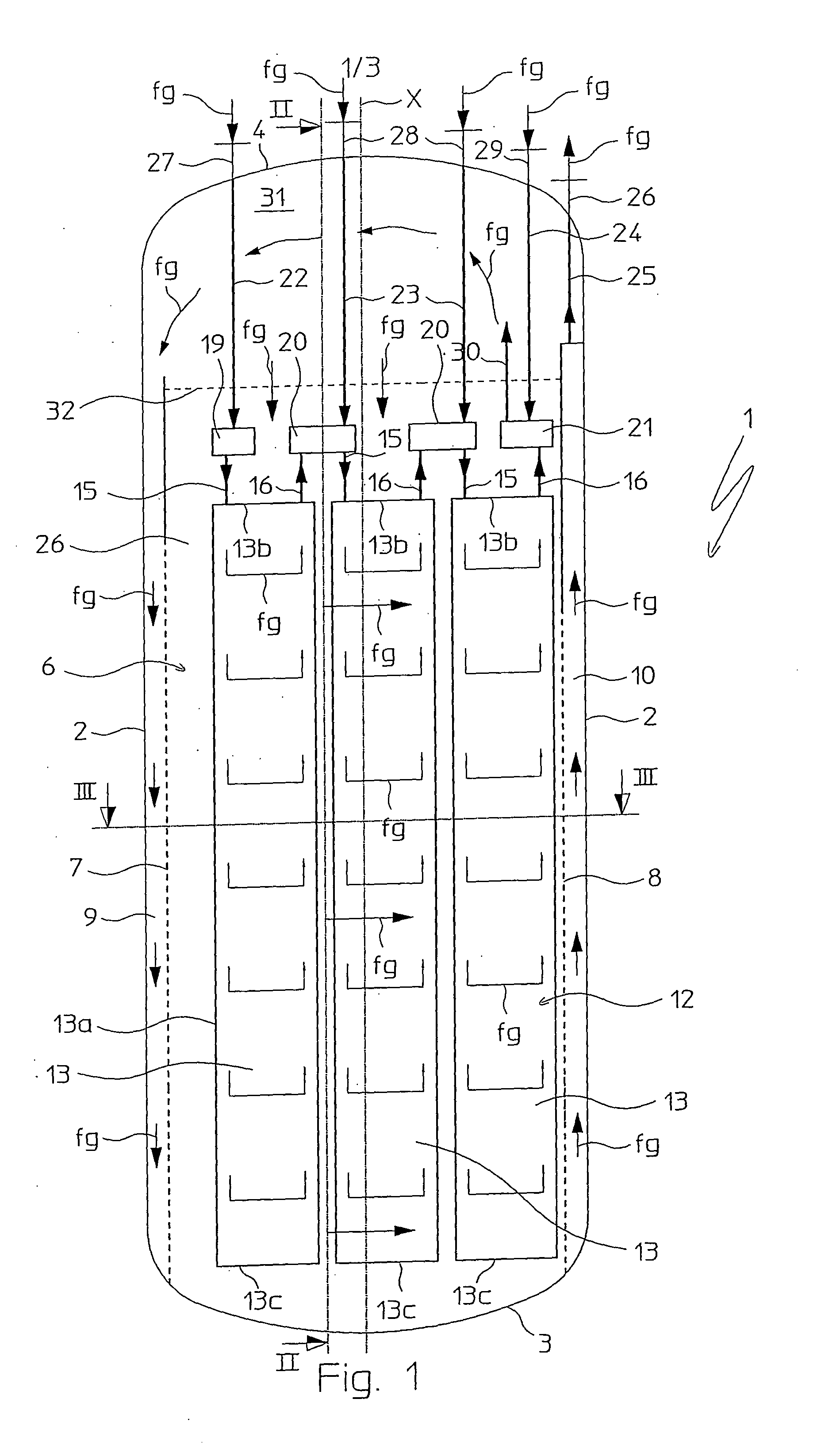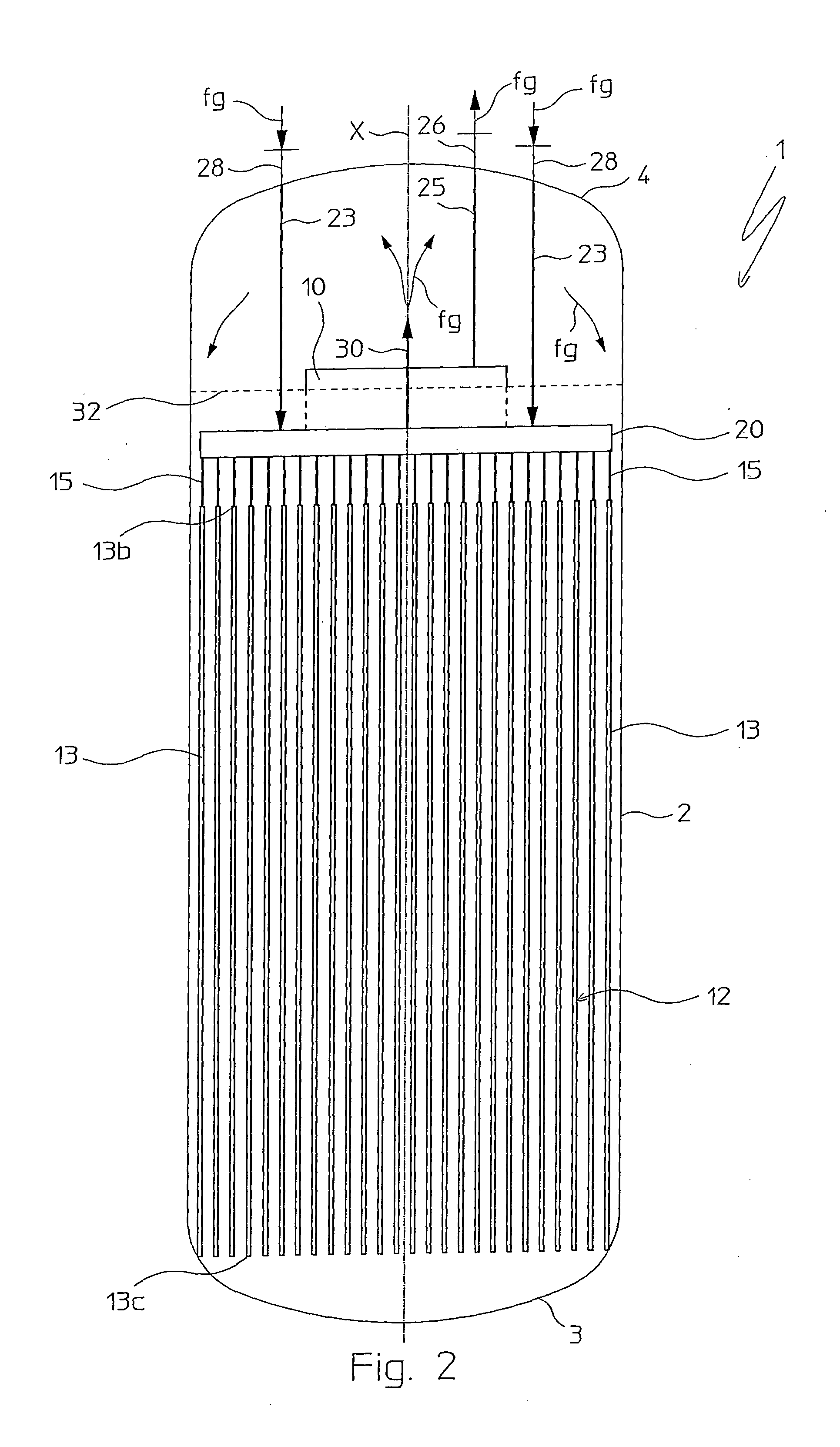Isothermal Reactor
a technology of isothermal reactor and heat exchanger, which is applied in the direction of indirect heat exchanger, physical/chemical process catalyst, lighting and heating apparatus, etc., can solve the problems of complex radial configuration of heat exchanger in terms of construction and assembly, non-homogenous catalytic area between heat exchangers, and inability to achieve optimal temperature distribution, simple and effective isothermal reactor
- Summary
- Abstract
- Description
- Claims
- Application Information
AI Technical Summary
Benefits of technology
Problems solved by technology
Method used
Image
Examples
Embodiment Construction
[0031]With reference to the aforementioned figures, reference numeral 1 globally indicates a pseudo-isothermal chemical reactor according to the present invention for the synthesis of chemical substances, in particular ammonia.
[0032]Said reactor 1 comprises a cylindrical shell 2, with longitudinal axis X, defined at the opposite ends by lower and upper bottoms 3, 4. In the example of the figures, the longitudinal axis X is vertical.
[0033]Inside the cylindrical shell 2 a catalytic bed, generically indicated with 6, is housed and supported in a per se conventional way, the catalytic bed 6 being delimited laterally by opposite perforated side walls 7 and 8 for the inlet of a gaseous flow of reactants and for the outlet of a gaseous flow comprising reactants and reaction products. The catalytic bed 6 is also open on top, i.e. equipped with grids for containing the catalyst that are permeable to gas, not represented as they are conventional. The filling level of the catalytic bed 6 by th...
PUM
| Property | Measurement | Unit |
|---|---|---|
| temperature | aaaaa | aaaaa |
| heat exchange efficiency | aaaaa | aaaaa |
| area | aaaaa | aaaaa |
Abstract
Description
Claims
Application Information
 Login to View More
Login to View More - R&D
- Intellectual Property
- Life Sciences
- Materials
- Tech Scout
- Unparalleled Data Quality
- Higher Quality Content
- 60% Fewer Hallucinations
Browse by: Latest US Patents, China's latest patents, Technical Efficacy Thesaurus, Application Domain, Technology Topic, Popular Technical Reports.
© 2025 PatSnap. All rights reserved.Legal|Privacy policy|Modern Slavery Act Transparency Statement|Sitemap|About US| Contact US: help@patsnap.com



